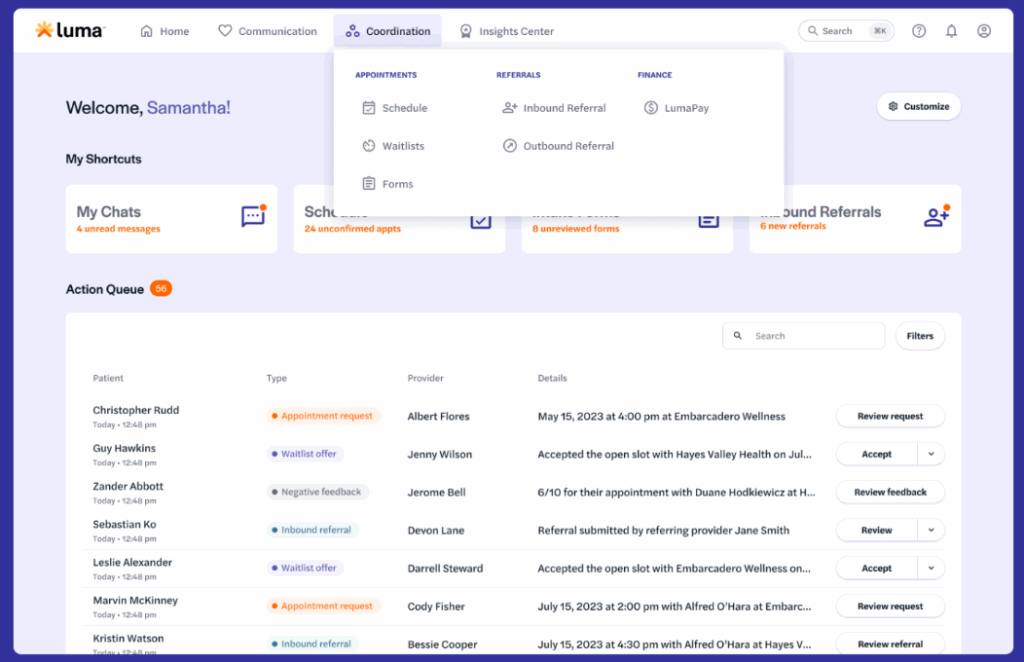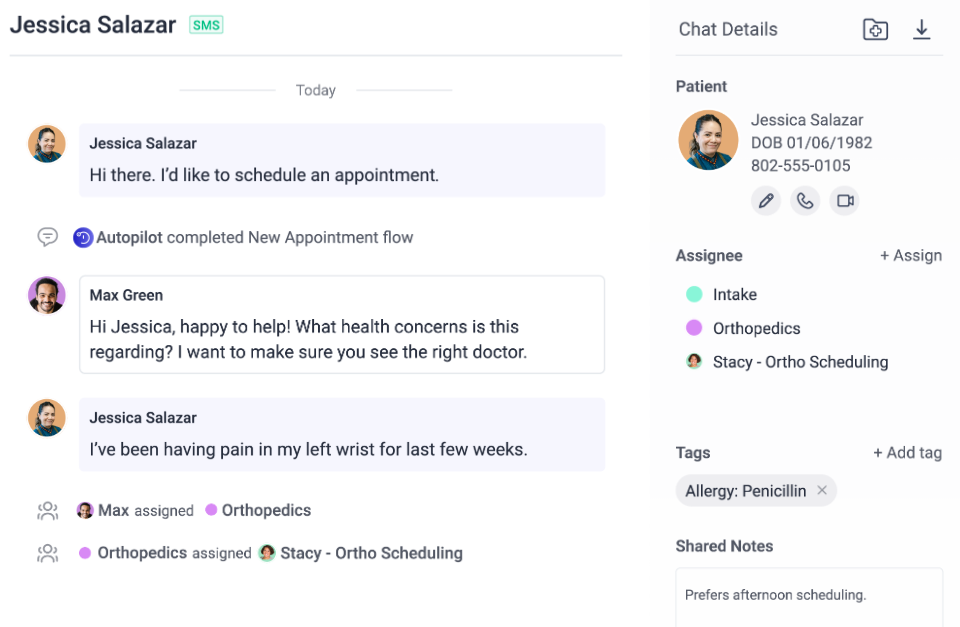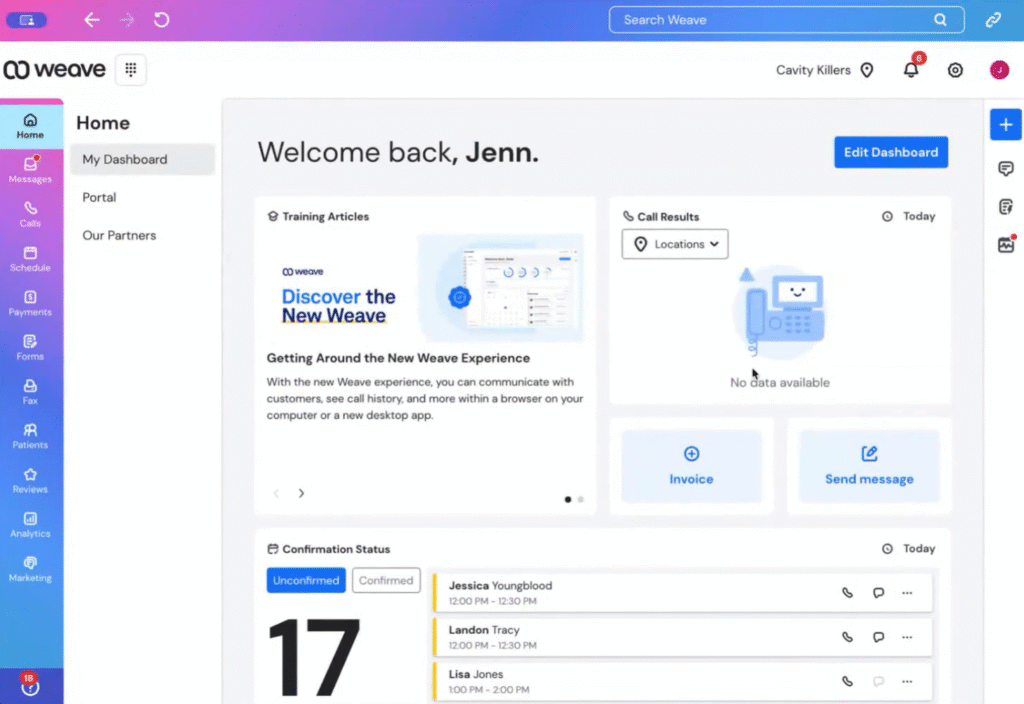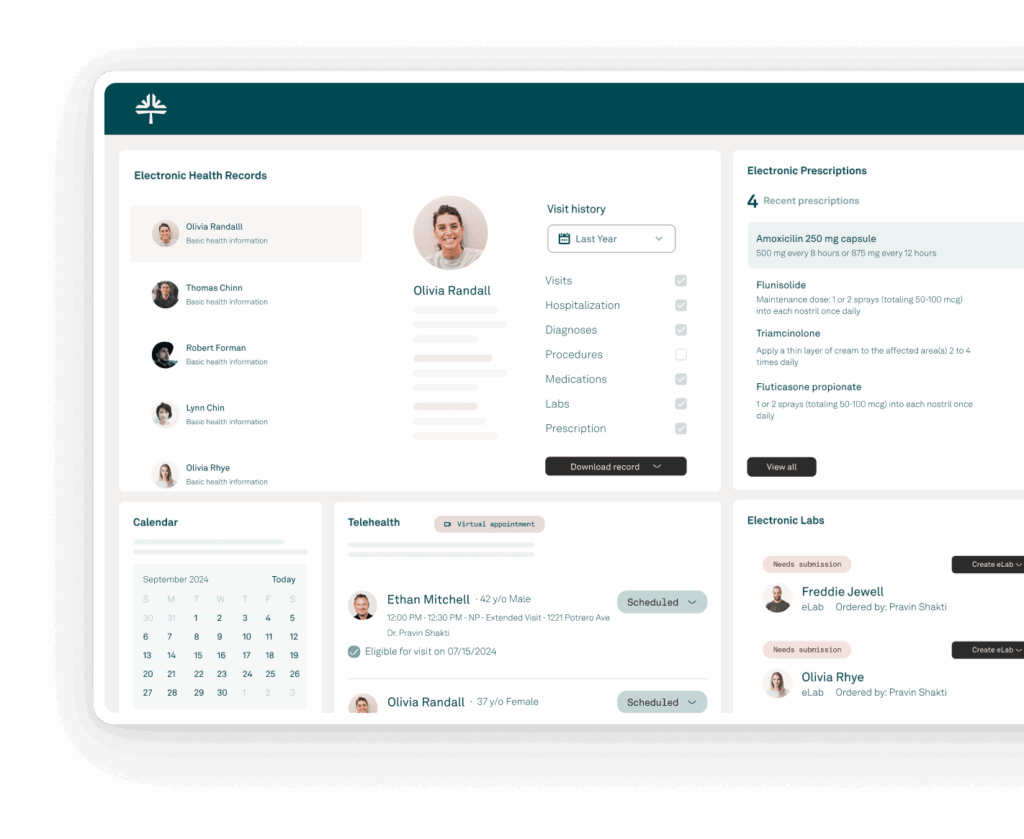- Home
- Learn
- Healthcare
- 5 Best patient communication platform for 2025
HEALTHCARE
5 Best patient communication platform for 2025
Contents
If you work in the healthcare space, you already know it’s not an easy task to connect with and build real connections with your patients.
It’s not that communication tools don’t exist, but the generic ones aren’t built for the sophistication that healthcare domain demands.
This is where a patient communication platform comes into the picture.
Unlike regular email or texting tools, these platforms are designed for healthcare. They follow healthcare privacy rules like HIPAA, connect with systems like your EHR or scheduling software, and make it easier to manage large volumes of messages.
In this article, we’ll go over what these platforms do, what features matter most, and explore the 5 best patient communication platforms to help you choose the one that fits your practice’s needs best.

Patient information is private, so the system you use must protect it at every step. Look for HIPAA compliance, data encryption, and audit logs that track all conversations (while keeping them encrypted) in your patient communication platform. Tools like personal email or regular texting apps don’t offer that level of protection.
Healthcare communication (like any communication) is better when it’s two-way. Patients should be able to confirm appointments, ask quick questions, or share updates through secure messages. Clinics that switch from one-way reminders to two-way messaging can improve patient response rates because it feels more personal and convenient.
Every person interacts differently. Some check text messages instantly; others prefer email or phone calls. A good communication platform should support all these options, so you can reach patients through the medium they’re most comfortable with. This flexibility can be the difference between a missed visit and a confirmed appointment.
The platform should connect with your EHR, scheduling, and billing tools. When systems share information automatically, staff spend less time entering data manually and errors drop. For example, when an appointment is scheduled in your CRM, the platform can send a confirmation message automatically without needing any extra steps.
Automation can remove a lot of repetitive work. You can set reminders to go out before appointments, send follow-ups after visits, or even share preparation instructions automatically. Many practices that use automation report fewer no-shows and smoother patient journeys, because the system handles routine outreach consistently.
A platform only matters if people can use it well. Patients should be able to open and reply to messages easily, without logging into a complicated portal. For staff, the system should be intuitive enough to learn quickly. If your team can handle most communication with a few clicks, adoption will happen faster.
To understand whether communication is improving, you need data. A good platform will show how many reminders were sent, how many patients replied, and how your no-show rate has changed. These numbers help you refine your workflows, and measure real results over time.
| Patient communication platform | Best features | Rating (from G2) | Pricing |
| LeadSquared | Intake automation, multi-channel patient communication, AI-driven virtual assistant, Robust EHR/EMR integration | 4.5/5 | Pro – $60/user/month Super – $100/user/month |
| Luma Health | Two-way secure texting, AI-powered intake, bi-directional EHR integrations | 4.8/5 | Custom pricing |
| OhMD | Secure texting from existing clinic number (no app needed), automated SMS workflows (reminders/surveys/video), EHR chat-log integration | 4.8/5 | Communicate – From $300/month Automate – From $500/month Develop – Custom pricing |
| Weave | Built-in payments tools (Text-to-Pay, BNPL, online), AI-powered call intelligence & review requests | 4.6/5 | Starts at $249/month |
| Tebra | Built-in telehealth & scheduling tools, solid analytics/reporting tools, AI Note Assist for clinical documentation | 4.1/5 | Custom pricing |
Primarily a healthcare CRM that offers strong patient communication and engagement modules. LeadSquared’s patient communication platform helps healthcare practices of all sizes handle tasks from patient intake, referral management and scheduling to messaging and feedback — all in its fully HIPAA-compliant platform.
One user shared that LeadSquared does a great job of capturing and organizing inquiries from different sources into its central system.
One user shared that while the system works well overall, minor syncing delays occasionally slow down real-time tracking.

Luma Health describes itself as a patient success platform designed to simplify how healthcare providers connect with their patients. The platform brings together tools for appointment scheduling, digital intake, two-way messaging, and more to help practices manage the full patient journey in one place.
A user mentioned that Luma’s secure real-time messaging helped them cut down on phone calls and made follow-ups easier to manage during their regular workflow.
One user expressed frustration with ongoing issues around form building and data mapping into their EMR, Cerner. Despite anticipating integration challenges, they were disappointed by continued delays.
Luma Health provides custom pricing based on the size and needs of the healthcare organization.

OhMD is a patient communication platform built around secure two-way messaging. It helps clinics and healthcare teams manage all patient conversations, from appointment reminders and referrals to surveys and telehealth. With OhMD, patients can text their provider directly without downloading an app, making it easy to stay in touch while keeping everything HIPAA-compliant.
One user highlighted its convenience and ease of use, saying they felt confident in the platform’s HIPAA compliance capabilities and found implementation smooth for both staff and patients.
One user mentioned being timed out during an active conversation, which caused messages to be lost and forced them to restart the chat.

Weave is a patient communication platform that combines phone, text, email, scheduling, payments, and reviews into one connected system. Designed for HIPAA-compliant healthcare communication, it’s especially suited for small and mid-sized practices that want an all-in-one solution to manage patient interactions efficiently.
One user praised the texting feature for improving communication and helping keep client records accurate. They also noted that onboarding was fast and the platform was easy to use.
One user pointed out that because Weave is internet-based, any network outage can bring down the entire phone system — which can be a major inconvenience for busy practices.

Tebra is an all-in-one healthcare platform that combines electronic health records (EHR), billing, scheduling, telehealth, patient engagement, and marketing tools into one unified system. It was created by merging two platforms Kareo (known for EHR and billing) and PatientPop (focused on patient acquisition and engagement).
One user mentioned that although they were initially hesitant to switch to another new system, Tebra turned out to be surprisingly easy to learn. They appreciated the responsive live video support and smooth, regular updates.
Another user noted that the interface could be more intuitive and pointed out missing functions such as 835 file imports, more detailed eligibility checks, the ability to disable statements for individual patients, and fewer navigation tabs. They also felt the reporting could offer more customization options.
Custom pricing based on practice size and required modules.
Each tool we discussed helps healthcare teams improve coordination and deliver a better experience for patients.
If your practice still relies on manual reminders, phone calls, or disconnected tools, a unified communication platform can make a big difference. As we saw, it helps you save time, improve response rates, and keep patients engaged throughout their care journey.
LeadSquared brings these benefits together in its fully HIPAA-compliant platform. It combines patient communication with CRM and workflow automation so your team can manage outreach, follow-ups, and engagement in a single system.
If you wish to see what this would look like in action, feel free to book a quick demo with our team.
A patient communication platform is software that primarily helps healthcare teams send, receive, and manage messages with patients—like appointment reminders, follow-ups, and check-ins. The main difference from an EHR (electronic health record) is that EHRs store and manage clinical information, while communication platforms make it easier to engage and communicate with patients. The best tools integrate with your EHR, so both systems work seamlessly together.
Yes. Timely reminders and follow-up messages offered by a patient communication platform make a noticeable difference. Practices that use automated outreach tools can see fewer no-shows and smoother appointment management.
At first, there may be a short learning curve while workflows are set up. But once up and running, the platform usually saves time.
Choose a vendor that offers encryption, audit trails, and a Business Associate Agreement (BAA). If you’re in the U.S., confirm that the tool is HIPAA-compliant, and ask how it stores data and integrates with your EHR to maintain data security.
Common mistakes include picking a tool based only on price, skipping EHR integration, or not training staff properly. Another mistake is failing to define what success looks like (such as fewer missed appointments or better patient response rates) before implementing the tool.
Costs depend on your size, features, and number of users. Smaller practices might pay a few hundred dollars per month, while larger systems with advanced integrations pay more. Ask about message limits, onboarding costs, and add-ons to get a complete picture before signing up
These platforms are used by clinics, hospitals, specialty practices, and telehealth providers. Small clinics use them to save staff time, while larger organizations rely on them to manage communication across departments or multiple locations.
Patient communication platforms can be used to handle appointment reminders, patient intake, post-visit follow-ups, and medication reminders. Many clinics also use them to collect feedback, send preventive care messages, and handle secure two-way conversations with patients.
A patient communication platform enhances ROI by reducing missed appointments, saving staff time, and improving patient retention. For instance, if fewer patients skip appointments, your clinic recovers revenue that would have been lost—and happier patients are more likely to refer others.
Q. What exactly is a patient communication platform and how is it different from an EHR?
A patient communication platform is software that primarily helps healthcare teams send, receive, and manage messages with patients—like appointment reminders, follow-ups, and check-ins. The main difference from an EHR (electronic health record) is that EHRs store and manage clinical information, while communication platforms make it easier to engage and communicate with patients. The best tools integrate with your EHR, so both systems work seamlessly together.
Q. Can using a patient communication platform really reduce missed appointments?
Yes. Timely reminders and follow-up messages offered by a patient communication platform make a noticeable difference. Practices that use automated outreach tools can see fewer no-shows and smoother appointment management.
Q. Will implementing a patient communication platform add more work for staff?
At first, there may be a short learning curve while workflows are set up. But once up and running, the platform usually saves time.
Q. How can I make sure the patient communication platform is secure and compliant with patient privacy laws?
Choose a vendor that offers encryption, audit trails, and a Business Associate Agreement (BAA). If you’re in the U.S., confirm that the tool is HIPAA-compliant, and ask how it stores data and integrates with your EHR to maintain data security.
Q. What are some common mistakes when choosing a patient communication platform?
Common mistakes include picking a tool based only on price, skipping EHR integration, or not training staff properly. Another mistake is failing to define what success looks like (such as fewer missed appointments or better patient response rates) before implementing the tool.
Q. What budget should I expect for a patient communication platform?
Costs depend on your size, features, and number of users. Smaller practices might pay a few hundred dollars per month, while larger systems with advanced integrations pay more. Ask about message limits, onboarding costs, and add-ons to get a complete picture before signing up.
Q. Who typically uses a patient communication platform?
These platforms are used by clinics, hospitals, specialty practices, and telehealth providers. Small clinics use them to save staff time, while larger organizations rely on them to manage communication across departments or multiple locations.
Q. What are the most common ways healthcare teams use patient communication platforms?
Patient communication platforms can be used to handle appointment reminders, patient intake, post-visit follow-ups, and medication reminders. Many clinics also use them to collect feedback, send preventive care messages, and handle secure two-way conversations with patients.
Q. How can a patient communication platform improve return on investment (ROI)?
A patient communication platform enhances ROI by reducing missed appointments, saving staff time, and improving patient retention. For instance, if fewer patients skip appointments, your clinic recovers revenue that would have been lost—and happier patients are more likely to refer others.